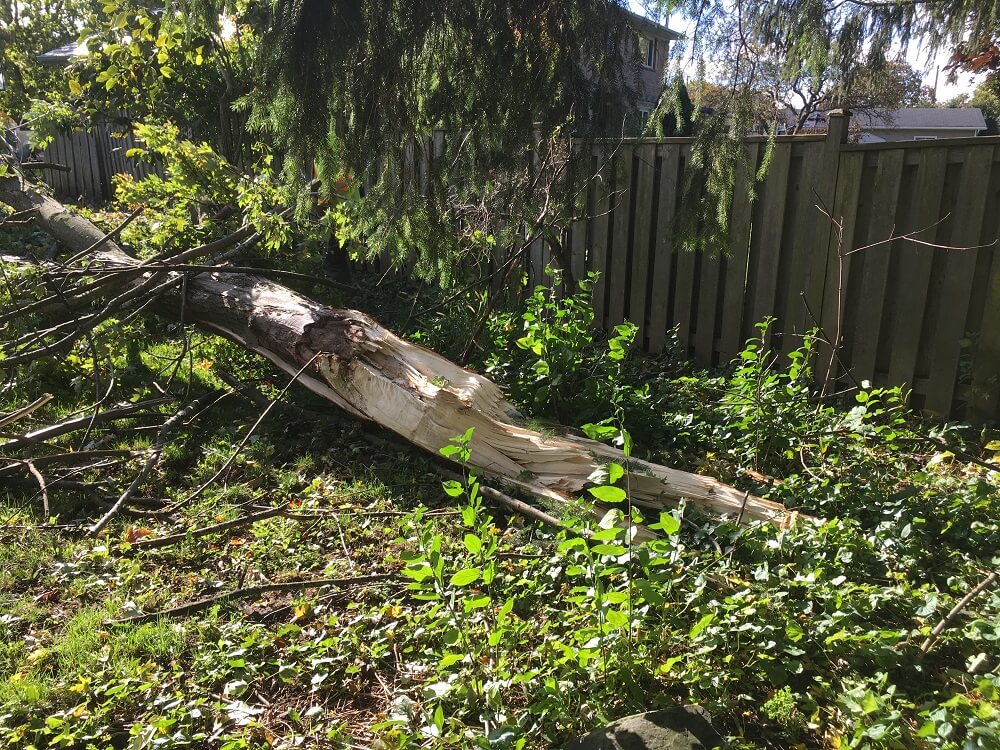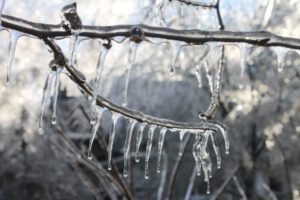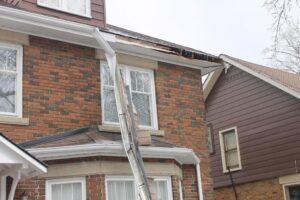
We have all seen the tree damage is caused by extreme weather. Some storms are more destructive than others and we are often left deciding between restoring the crown or removal of the tree.
Unfortunately, storms will often lead to tree removals. After the latest storm, there were many trees that sustained too much damage and posed a risk to the community, so they had to be removed.
However, there were many trees with minimal damage that were cut down because people were afraid of another storm coming and causing further damage. Fear of personal injury or damage to property is the number one reason people tell us that they want to remove a tree — but it’s not always necessary.
In this post, we’ll explain how you should decide between a crown restoration or a tree removal, when evaluating storm-damaged trees on your property. There may be situations where you will need to remove a tree, but it’s usually better for your property and your other trees if you can avoid it.
Crown Restoration

After storm damage, many trees can be pruned to restore structural integrity and reduce the risk of future failure.
Crown restoration is an approach to pruning storm-damaged trees (or improperly pruned trees) that returns the crown to a more balanced structure and helps the tree recover by encouraging new growth. It is an excellent option for preserving trees after storms.
If you’re wondering whether or not your tree is able to be saved after a storm, then ask for an assessment by a trained arborist. An arborist will be able to accurately evaluate the risk posed by your tree and let you know if a crown restoration will be possible.
Goals for Crown Restoration
- Remove or reduce damaged branches
- Remove hangers and other hazards
- Reduce exposed branches
- Bring balance back to the crown
Each time a tree breaks from an ice or wind storm, it leaves the branches around the break exposed. When we prune to restore the crown of a tree, our goal is to bring balance back to these areas of the crown, so they are are less susceptible to failure.
Reducing exposed branches can limit the effects of windsail and heavy ice accretion in future storms. Windsail reduction is the process of thinning the branches of a tree to lower branch resistance and allow the wind to flow more freely through it.
Follow-up pruning is also important to manage any sucker growth and limit conditions in the crown that can lead to weakness and further damage.
Tree Removal

When a 100-year-old tree is removed, there is no replacing it. You could plant 10 small trees and you would still not see the benefits that the 100-year-old tree provided. This is why we are strong advocates for tree preservation and conservation arboriculture at Baum Tree Care.
However, when a tree has been mortally wounded in a storm, or its structure has become so compromised that a crown restoration will not be able to fix it, then removing the tree is the best choice. Before condemning a tree for removal, we will consider the following:
- Targets in the drop/fall zone of the tree
- Site factors affecting the tree
- Tree health
- Load factors on the tree
- Defects and conditions that affect the likelihood of tree or limb failure
Certain species of trees tend to suffer more damage during extreme weather, due to the nature of the wood and growth habits. We saw a higher percentage of soft Maples with major storm damage after the ice storm in Spring 2016. Many were mortally wounded and required removal. In most cases, there were defects present that contributed to the failure.
Preventative maintenance pruning is the best option to protect your trees before a storm. If you are invested in the long-term health of the trees on your property, we provide a pruning schedule for your tree that will help it maintain good structure and encourage the best growth possible.
The team of trained arborists at Baum Tree Care know what to look for in a tree. They will be able to spot any defects/cracks or diseases during preventative pruning and address them, before major problems occur as a result.
Contact us for help evaluating your storm-damaged trees today.


You must be logged in to post a comment.